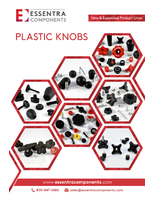NEMA issues statement on CFLs and UV emissions.
Press Release Summary:
Recent articles purport that CFLs emit enough UV radiation to cause skin damage. According to David Sliney, PhD, Chairman of the IESNA Photobiological Safety Committee, this is a complex issue that involves not only radiation levels, but distance from light source and exposure time. Based on current knowledge, levels of UV radiation emitted by CFLs are acceptably low and only under unusual conditions will one be exposed to levels above those set by ACGIH.
Original Press Release:
NEMA Statement on Compact Fluorescent Lamps and Ultraviolet Emissions
ROSSLYN, Va., -The National Electrical Manufacturers Association (NEMA) has issued a clarification on the effects of ultraviolet (UV) and infrared radiation from compact fluorescent lamps (CFLs).
CFLs are those small, energy-efficient fluorescent light bulbs with long life designed to replace traditional incandescent bulbs. CFLs are designed to emit most of their light in the visible spectrum, but they do give off small amounts of ultraviolet and infrared radiation, as do all fluorescent lamps.
Recent articles purport that CFLs emit enough UV radiation to cause skin damage. According to David Sliney, PhD, Chairman of the Illuminating Engineering Society of North America (IESNA) Photobiological Safety Committee, this is a complex issue that involves not only radiation levels, but distance from the light source and exposure time.
"Based on current knowledge, the levels of UV radiation emitted by CFLs are acceptably low and only under unusual conditions will one be exposed to levels above those set by the American Conference of Governmental Industrial Hygienists (ACGIH)," said Dr. Sliney.
Scientists joined with representatives from the lighting industry, the Food and Drug Administration, and the medical profession in 2006 and 2007 to develop the current RP 27 series of standards, published by IESNA, pertaining to acceptable levels of radiation emissions from all light sources.
The IESNA RP 27 series is based on measurements taken and thresholds established by ACGIH. The standards are periodically reviewed and updated based on the latest research and the development of new products. If CFLs exceed radiation levels set forth in IESNA RP 27.3-2007, the standard requires that the packaging be labeled with a caution label.
Unless an individual is medically diagnosed to be particularly sensitive to UV radiation or visible light or has a particular medical condition such as a form of lupus, one should be able to use CFLs at the same distance as traditional incandescent light bulbs. Most distances are at least a foot or more. Increasing distance between a person and the CFL will reduce the already low levels of UV radiation since light intensity declines rapidly with distance.
It should be noted that the glass in CFLs serves to reduce the low levels of UV radiation emitted along with the filtering effect of any additional glass, plastic, or fabric used in the table or task light or lighting fixture. There are also CFL bulbs available today that contain a cover that will reduce any UV emissions compared to uncovered spiral types.
For more information, see the U.S. Food and Drug Administration website, which addresses this and other commonly asked questions regarding CFL use and safety: www.fda.gov/Radiation-EmittingProducts/RadiationEmittingProductsandProcedures/HomeBusinessandEntertainment/ucm116400.htm
NEMA is the association of electrical equipment and medical imaging manufacturers, founded in 1926 and headquartered in Arlington, Virginia. Its member companies manufacture a diverse set of products including power transmission and distribution equipment, lighting systems, factory automation and control systems, and medical diagnostic imaging systems. Worldwide annual sales of NEMA-scope products exceed $120 billion.
NEMA. Setting Standards for Excellence
Visit our website at www.nema.org



